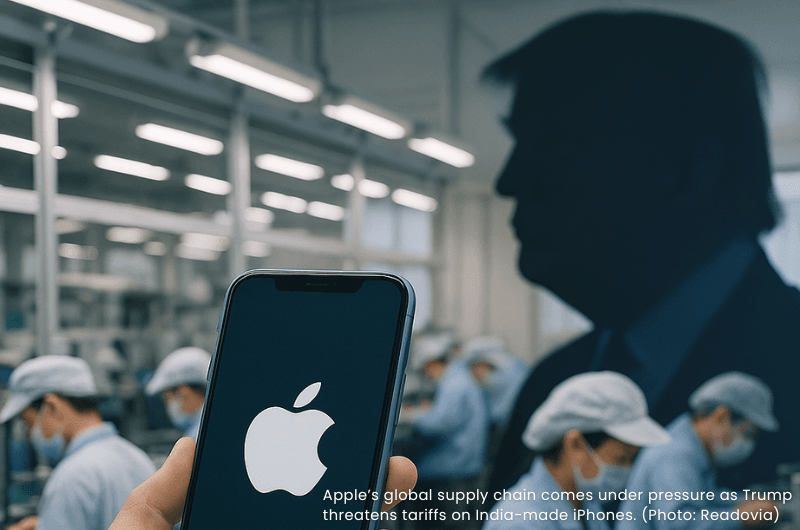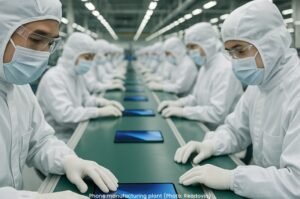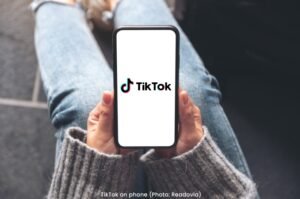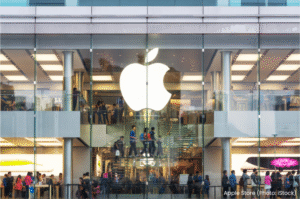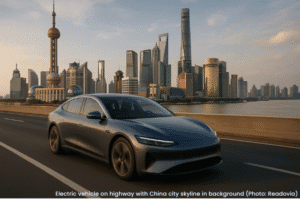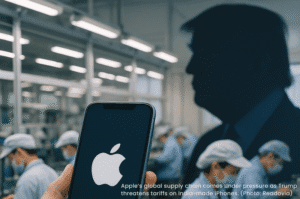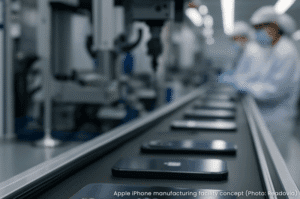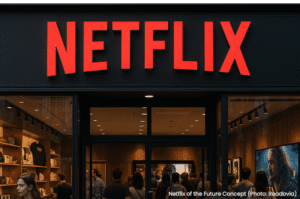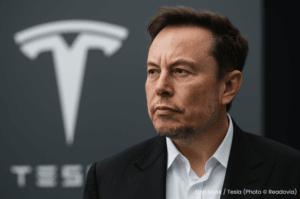Apple’s India Expansion Draws Trump’s Wrath Over U.S. Jobs and Manufacturing
President Donald Trump is once again targeting Apple — and this time, he’s threatening a 25% tariff on all iPhones not made in the United States.
At the center of the clash is Apple’s growing production shift to India, where CEO Tim Cook recently confirmed that most U.S.-bound iPhones this fiscal quarter will be manufactured. The move is part of Apple’s broader effort to diversify away from Chinese factories — and it’s landed the company squarely in the middle of Trump’s escalating trade offensive.
From China to India — But Not to America
For years, Apple has depended on China’s massive industrial infrastructure to produce its most iconic product. That partnership allowed the company to scale quickly, maintain competitive pricing, and manage global supply chains with precision.
But as U.S.–China tensions rise, Apple has accelerated its pivot toward Indian assembly lines. It’s a strategy driven not just by geopolitics, but economics: labor costs, supplier availability, and manufacturing speed.
Still, bringing production to the U.S. remains unlikely. The American manufacturing base simply doesn’t offer the same scale — and the cost would be staggering.
The Price of a “Made in America” iPhone
According to multiple bank analysts, if Apple were forced to make its iPhones entirely in the U.S., the cost could skyrocket.
A $1,200 iPhone today might retail for anywhere from $1,500 to $3,500 if built domestically, depending on tariffs, labor, and parts sourcing.
That kind of price shock could ripple through the tech sector — and consumer wallets.
Politics Meets Product Design
Trump’s threat is the latest in a wave of policy pressure designed to bring tech manufacturing home. Supporters argue it’s time U.S. companies reinvest in domestic jobs. Critics warn that such moves could harm consumers and destabilize supply chains.
So far, Apple hasn’t responded directly to Trump’s Friday comments. But in recent months, Cook has reiterated Apple’s commitment to “responsible global production” — and has signaled no plans to return large-scale iPhone production to American soil.
Why U.S. iPhone Manufacturing Is Still a Long Shot
Despite the political pressure, building iPhones in the U.S. remains highly unlikely — and prohibitively expensive. Apple’s supply chain, carefully built in China since the 1990s, is vast, deeply specialized, and not easily replicated.
Analysts say that shifting this infrastructure to the U.S. would take years and billions of dollars, requiring new plants, trained labor, and entirely new logistics. Even in the best-case scenario, production might not begin before 2028 — if at all.
“The concept of making iPhones in the U.S. is a nonstarter,” said Dan Ives, a veteran Apple analyst at Wedbush Securities. He estimates that a $1,000 iPhone made in China or India would balloon to $3,000 or more if manufactured in the U.S. “Price points would move so dramatically, it’s hard to comprehend.”
Can Apple Absorb the Impact? For Now — Yes
Apple did not immediately respond to Trump’s tariff threat, but on its most recent earnings call, CEO Tim Cook said the company was able to “optimize its supply chain” in the March quarter, limiting the damage from earlier tariffs.
But he cautioned that it’s “very difficult” to predict beyond June, suggesting that further tariffs could disrupt even Apple’s fine-tuned global network.
At some point, analysts say, the company may have to raise prices — especially if overseas suppliers continue to bear the brunt of the trade war. But for now, Apple has wiggle room, thanks to a secret weapon: services.
Services Keep Apple’s Margins Strong
Apple’s booming services division — which includes App Store revenue, iCloud subscriptions, and Apple Music — generated $96 billion last year. That revenue is untouched by tariffs and gives the company some breathing room.
“Apple can absorb some of the tariff-induced cost increases without significant financial impact — at least in the short term,” said Forrester Research analyst Dipanjan Chatterjee.
That buffer may allow Apple to hold the line on iPhone prices for now, but the question remains: For how long?
Jobs, Not iPhones: Apple’s U.S. Investment Strategy
To placate Trump earlier this year, Apple announced plans to invest $500 billion in the U.S. and add 20,000 new jobs by 2028. But the money won’t be going toward building iPhones.
Instead, Apple is funding data centers and expanding its footprint in artificial intelligence infrastructure — a booming area of competition.
U.S. Commerce Secretary Howard Lutnick, however, predicted a manufacturing shift was inevitable. “The army of millions and millions of human beings screwing in little screws to make iPhones — that kind of thing is going to come to America,” Lutnick said on CBS in April. But not everyone agrees.
Skilled Labor Gap Still a Barrier
In a 2017 appearance at a conference in China, Tim Cook questioned whether the U.S. had the vocational workforce to handle the precise and repetitive tasks needed on Apple’s assembly lines. The kind of fine motor work done in Chinese and Indian factories is difficult to scale in the U.S., both culturally and economically.
Even when Apple tried domestic assembly — like at a Mac plant in Texas — it was more of a symbolic gesture. That plant opened in 2013, during the Obama administration, and was later toured by Trump in 2019.
After the visit, Trump claimed credit
“Today I opened a major Apple Manufacturing plant in Texas that will bring high paying jobs back to America,” he posted on Nov. 19, 2019.
The Takeaway
Trump’s threat to impose tariffs on foreign-made iPhones is about more than trade — it’s about optics, leverage, and long-standing pressure on American companies to “bring jobs home.”
But the reality is clear: Apple isn’t building iPhones in America anytime soon — and if forced to, the price tag could be out of reach for millions of consumers.
The question now is not whether Apple can make iPhones in the U.S. — but whether the cost of resisting Trump’s pressure will be higher than the cost of compliance.
The Author

Jewel Perry
Editor-in-Chief, Readovia


